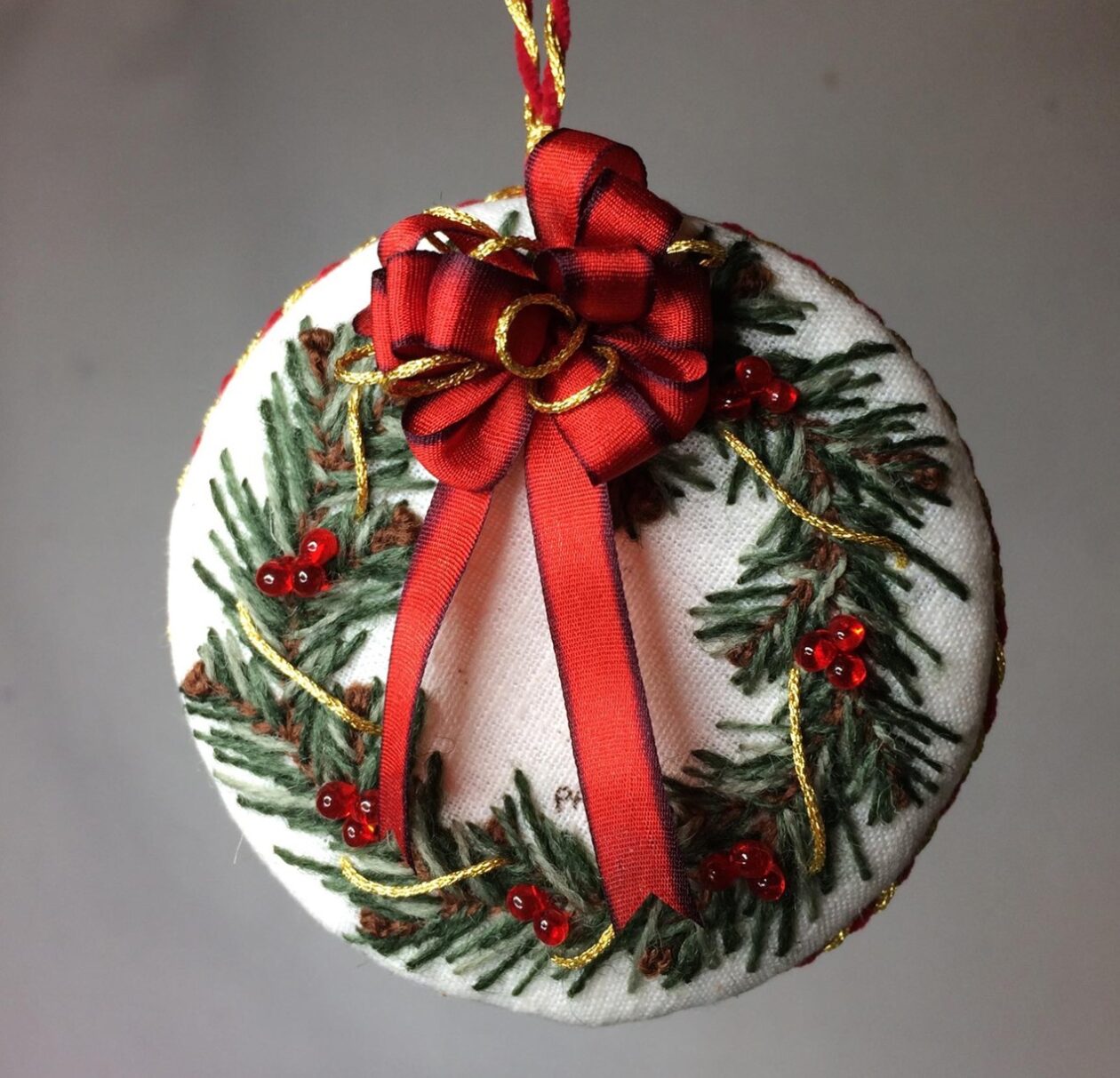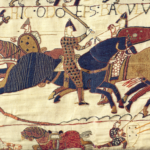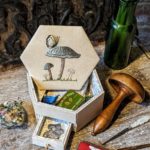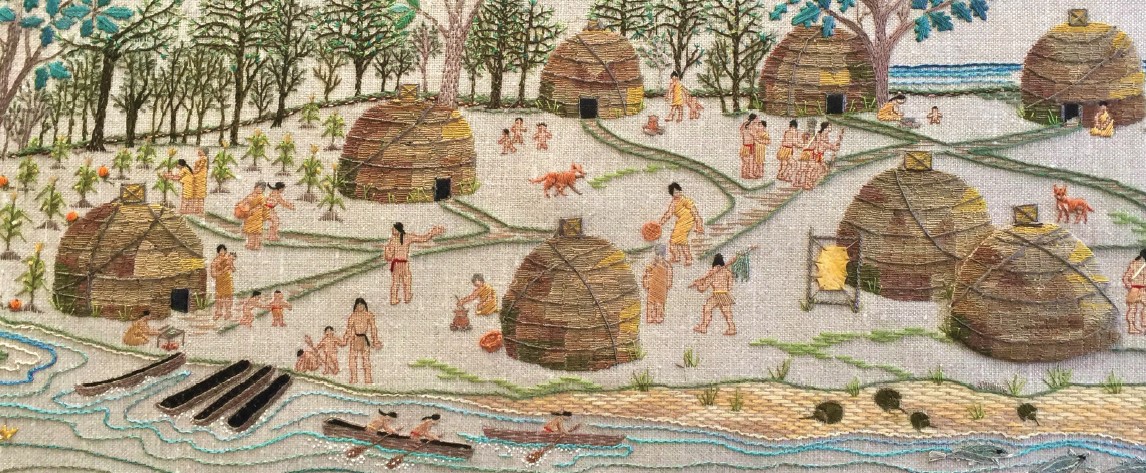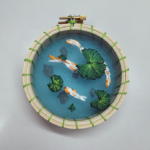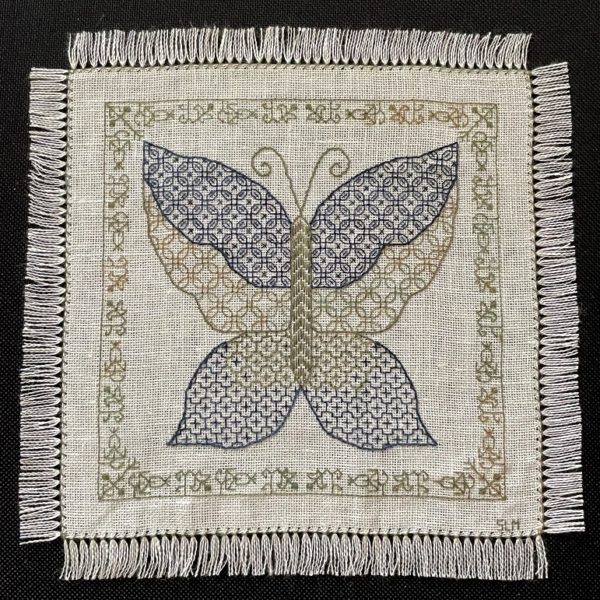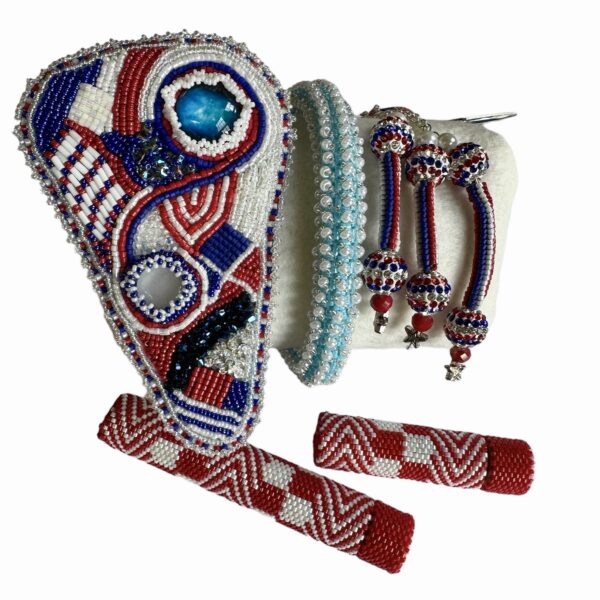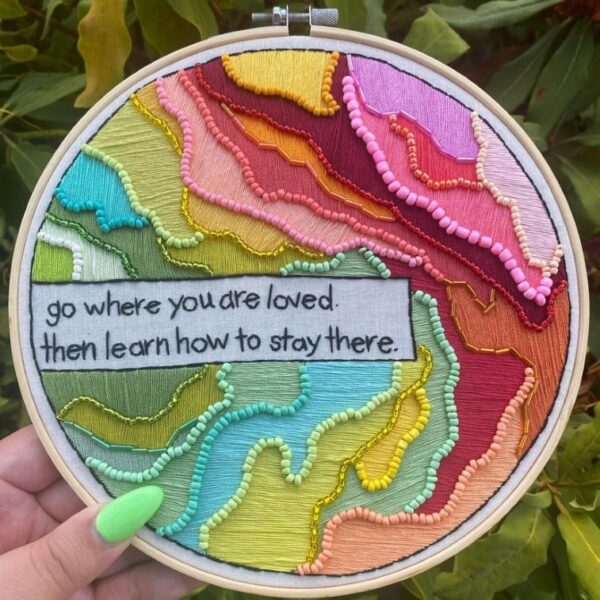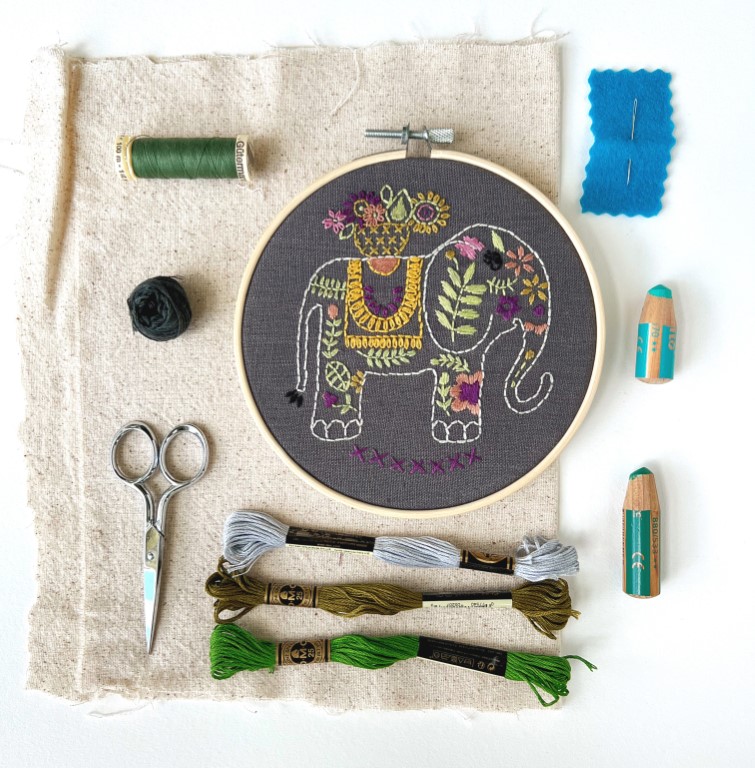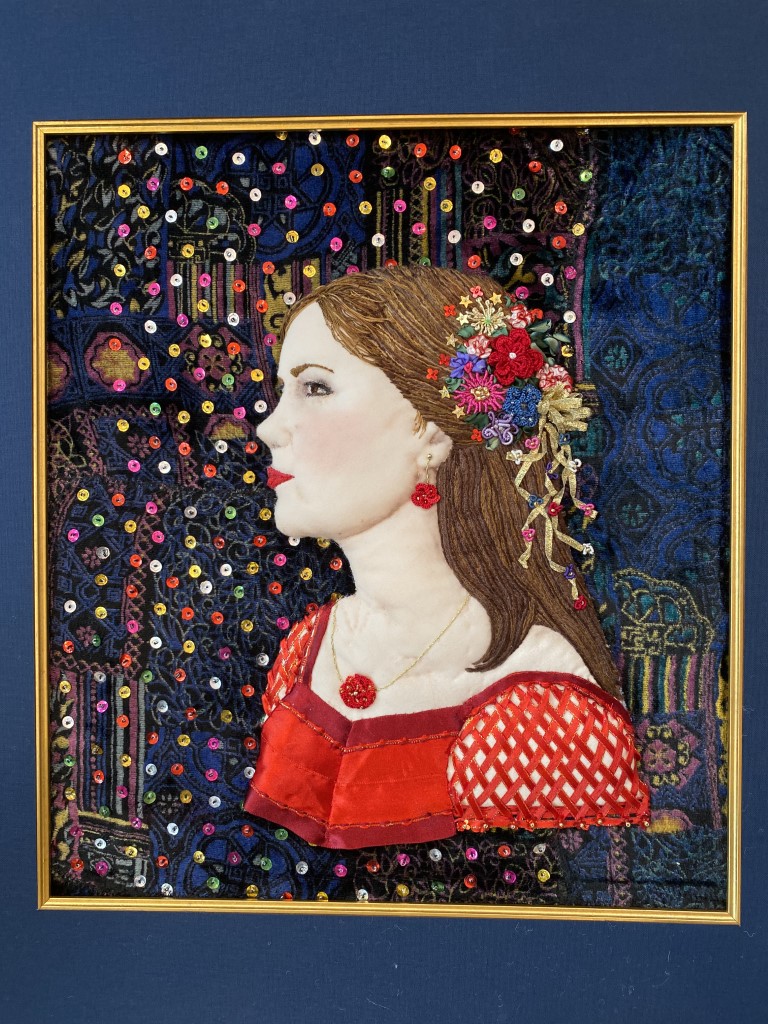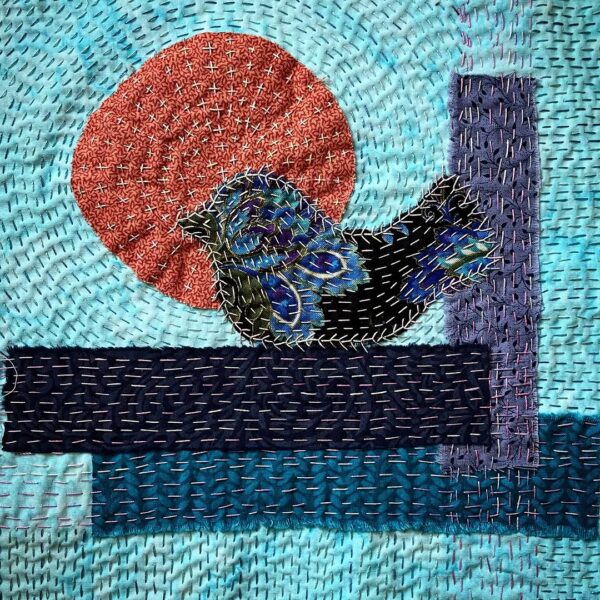Technique: Crewel, or crewel work
Place of Origin: England
Earliest known date: 17th century
History: The word “crewel” comes from the old Welsh word for wool (krua). Originally, the word referred to the wool fiber itself—it was only later that “crewel” came to define the style as well as the material used to stitch it. Crewel, or crewel work, has an indeterminate history. Embroidered crewel fragments have been discovered that date back to 1 BC, and the medieval period produced many pieces of crewel embroidery. For example, the Bayeux Tapestry, which was likely commissioned in the 11th century, provides an early example of crewel embroidery. However, the crewel technique—in the style as we know it today—did not rise to prominence until the 17th century.

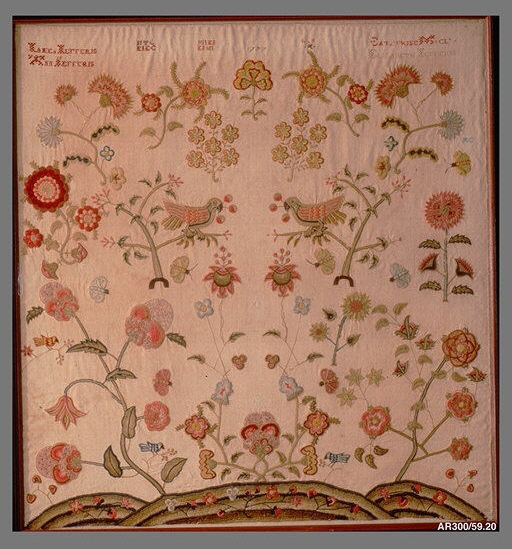
By the 17th century, crewel embroidery had become a fashionable and desirable skill among upper-class women in England. It was particularly popular during the Jacobean era, a time when decorative arts experienced a revival. Jacobean embroidery, a term often used interchangeably with crewel, refers to the style of embroidered motifs that became popular during this period, characterized by stylized floral and foliage designs, sometimes with fanciful animals. The decorative nature of crewel embroidery made it a key feature in bed curtains, wall hangings, cushions, other home decor, and clothing.
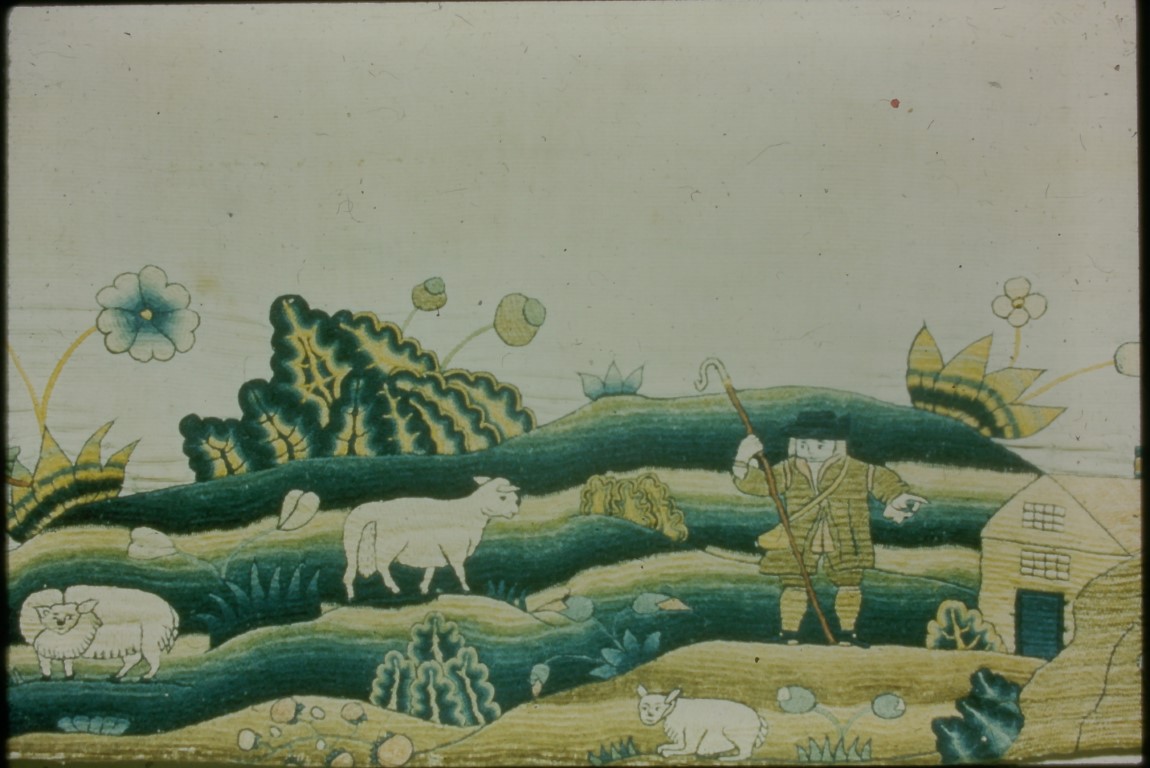
The crewel technique saw a decline during the industrial revolution, as mass production made hand embroidery less practical. However, it saw a resurgence in the Arts and Crafts movement of the late 19th and early 20th centuries. Designers like William Morris helped bring attention back to traditional craftsmanship, including crewel embroidery.
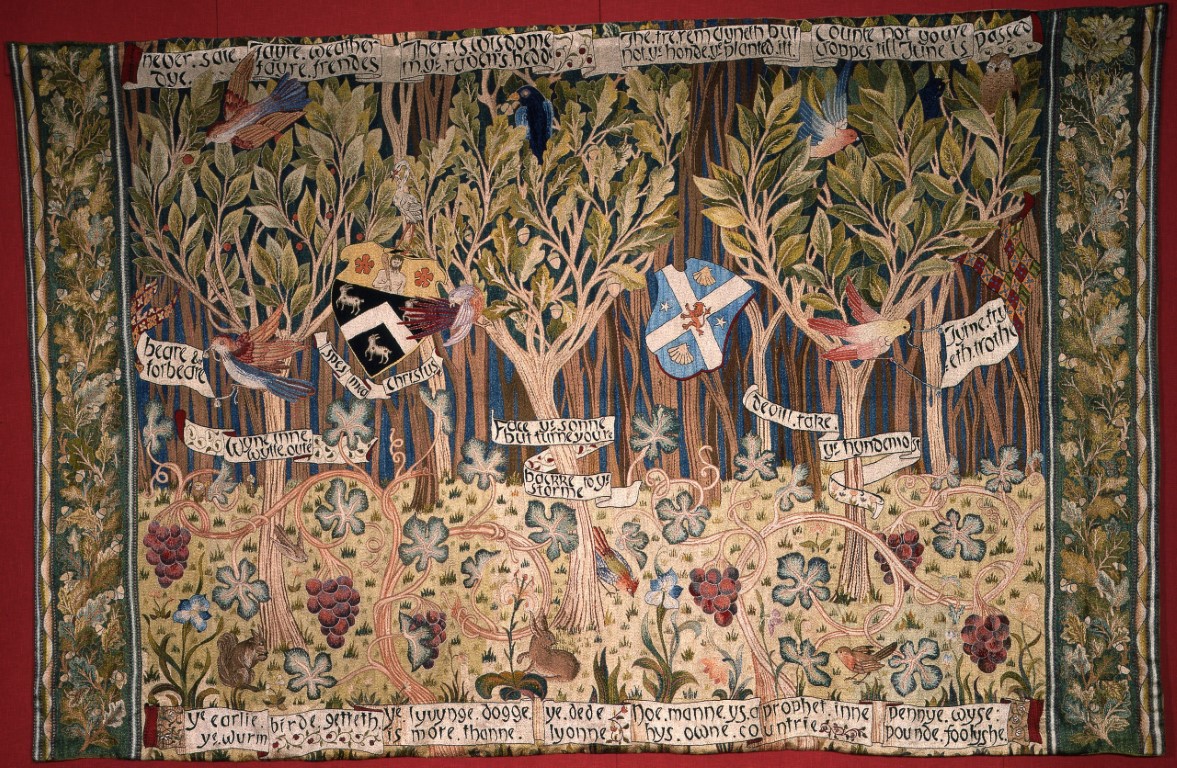
Materials, Techniques, and Stitches: As its name implies, crewel embroidery uses wool thread, specifically fine crewel wool. Traditionally, the base fabric is a tightly woven, durable material like linen or cotton twill, capable of supporting dense stitches and textured designs. Crewel wool is thicker than standard embroidery thread, which gives crewelwork its signature raised appearance.
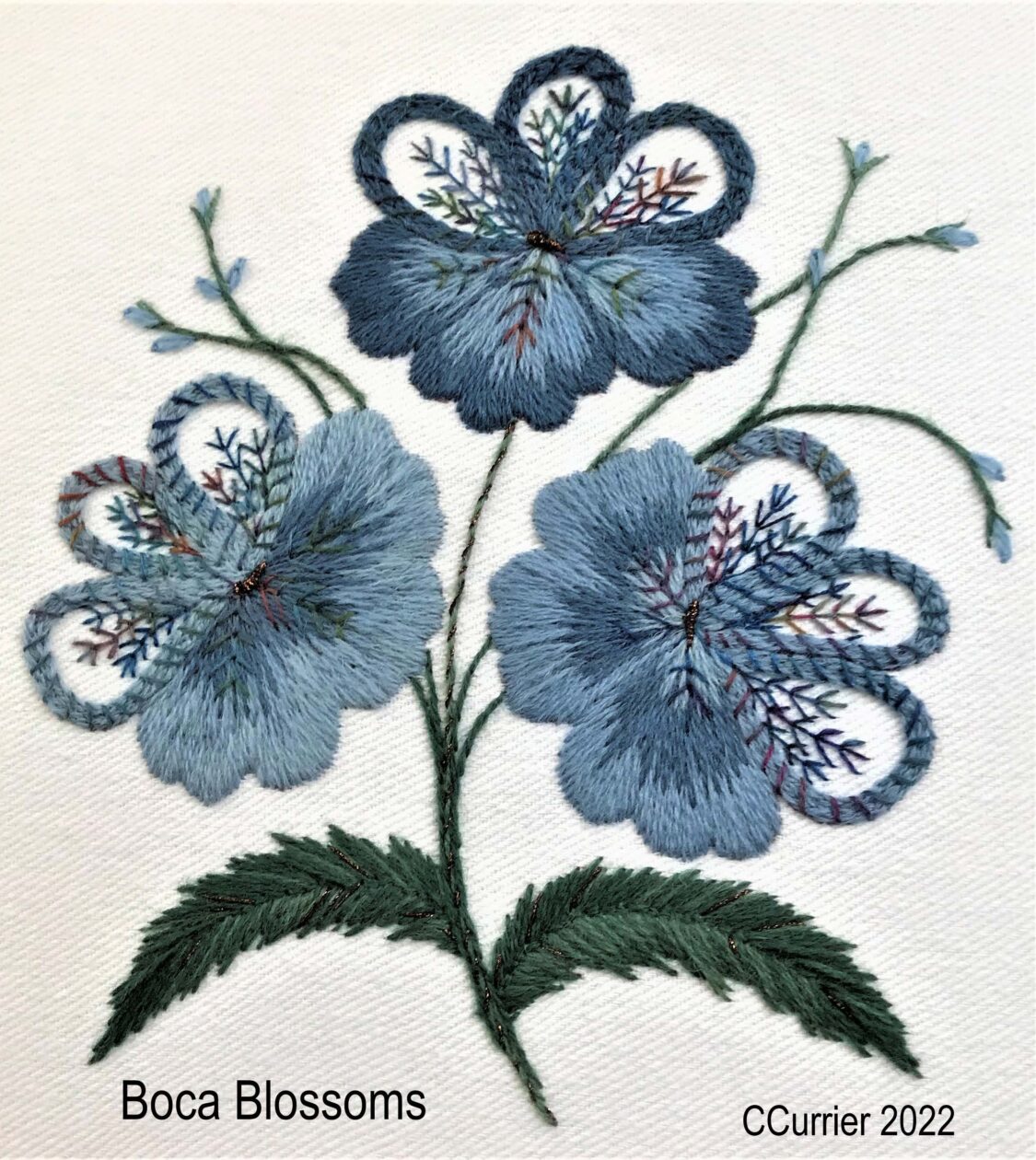
While wool is the primary material, crewel embroidery also sometimes incorporates silk or cotton threads, particularly in modern adaptations. In historical examples, natural dyes were used to color the wool, producing earthy and vibrant tones that contributed to the rich, luxurious appearance of the finished pieces.
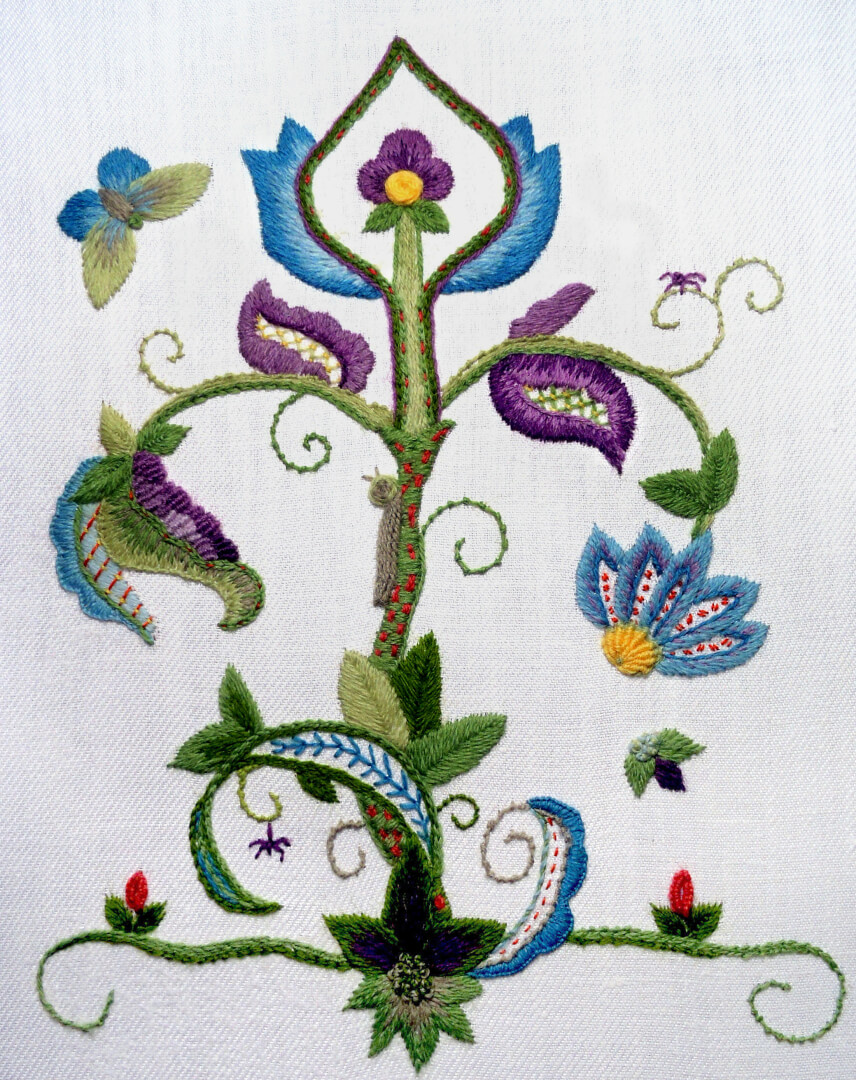
Frames or hoops are commonly used to keep the fabric taut, ensuring that stitches remain even and the fabric doesn’t pucker under the weight of the woolen threads. Needles with larger eyes, such as chenille needles, are also essential for threading the thicker wool and smoothly passing it through the fabric.
Crewel embroidery offers a wide variety of stitches that create texture and dimension. Some of the most commonly used stitches in this technique include stem stitch, satin stitch, chain stitch, French knots, long and short stitch, back stitch, and lazy daisy. Explore other stitches used in crewel work at the RSN Stitchbank.
Crewel embroidery is known for its free-form nature. Unlike counted styles like cross-stitch or Bargello, there is no need to follow a counted pattern. This promotes the flowing, organic style that has come to define crewel work. Layering stitches is a common technique, with one type of stitch often serving as the foundation for another. For example, a piece might begin with a stem stitch outline that is later filled in with satin or long and short stitches to create dimension and color contrast.
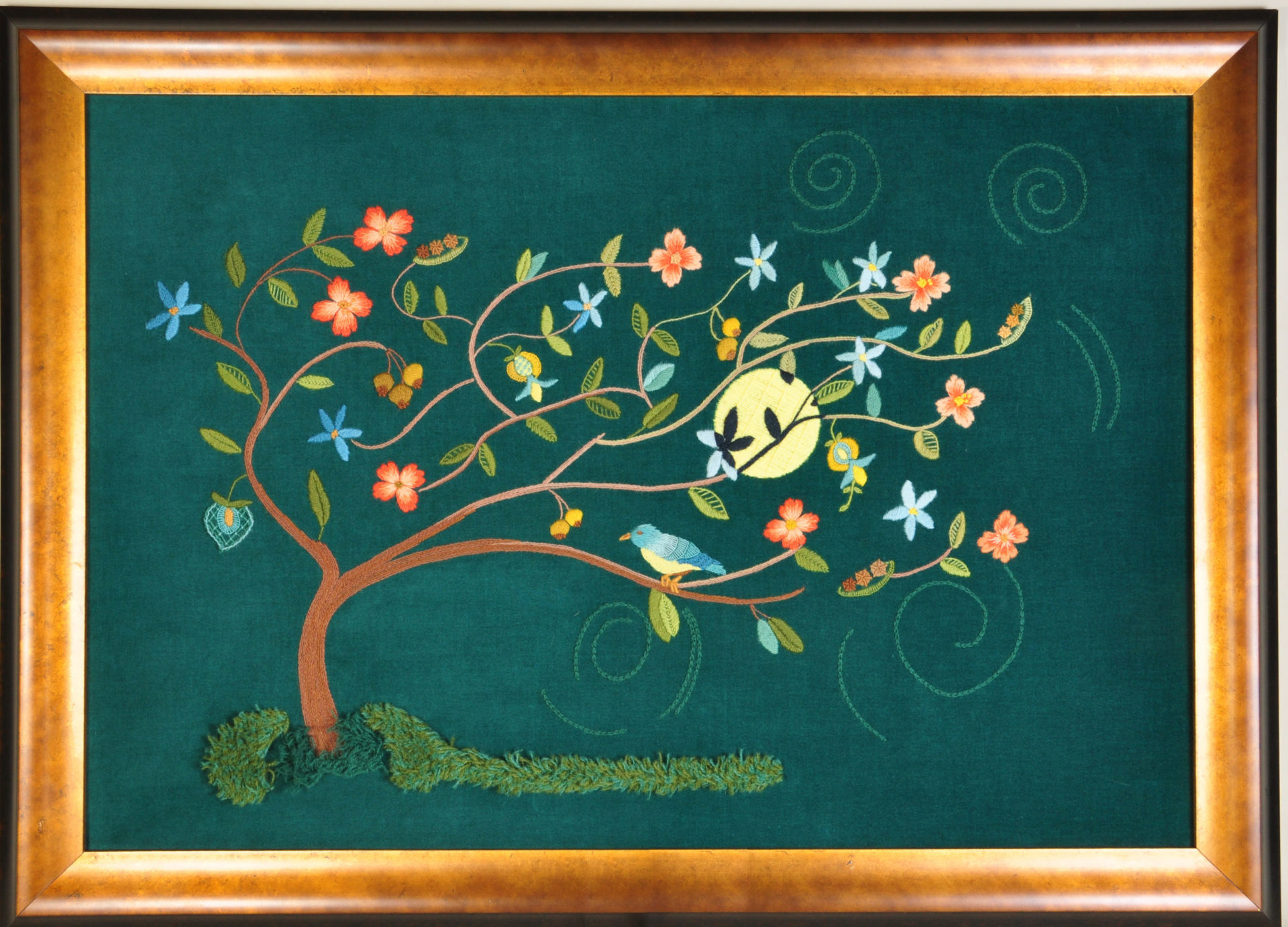
Another hallmark technique is the use of shading to create depth and realism in the design. By varying the length of stitches or blending colors, embroiderers can create the illusion of shadows or highlights, which is especially effective in floral and animal motifs. Padding, where extra layers of thread are added beneath a section of embroidery, is also a technique used to make areas of the design, such as flower petals or animal fur, stand out in relief.
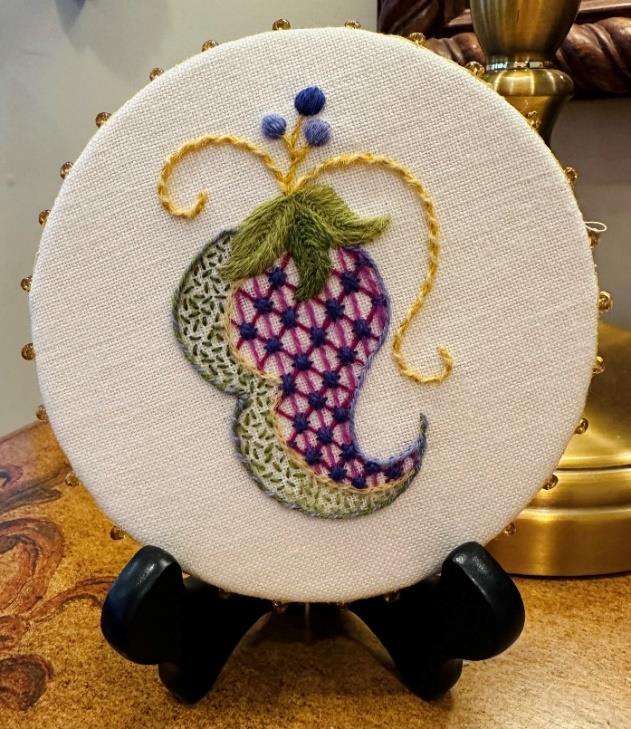
Nature is a big focus and inspiration for the motifs found in crewel embroidery. Floral designs are particularly common, with intricate depictions of swooping leaves, vines, and blossoms winding their way through the fabric. Birds, deer, and other animals are also frequently seen, especially in Jacobean crewelwork. These animals are often stylized and sometimes take on a fantastical quality, appearing in exaggerated poses or whimsical forms.
Are you interested in learning more about crewel embroidery? Download the free Crewel Wreath Ornament (shown above) here. EGA members can view our Early American Crewel Embroidery slideshow and can also download our Technique Basics: An Introduction to Crewel and Surface Embroidery here or browse our selection of crewel work Group Correspondence Courses. If you’re already experienced in crewel techniques, you may want to consider a Master Craftsman Certification in Crewel Embroidery and look out for news regarding the Technical Excellence Program in Crewel, which is coming very soon!
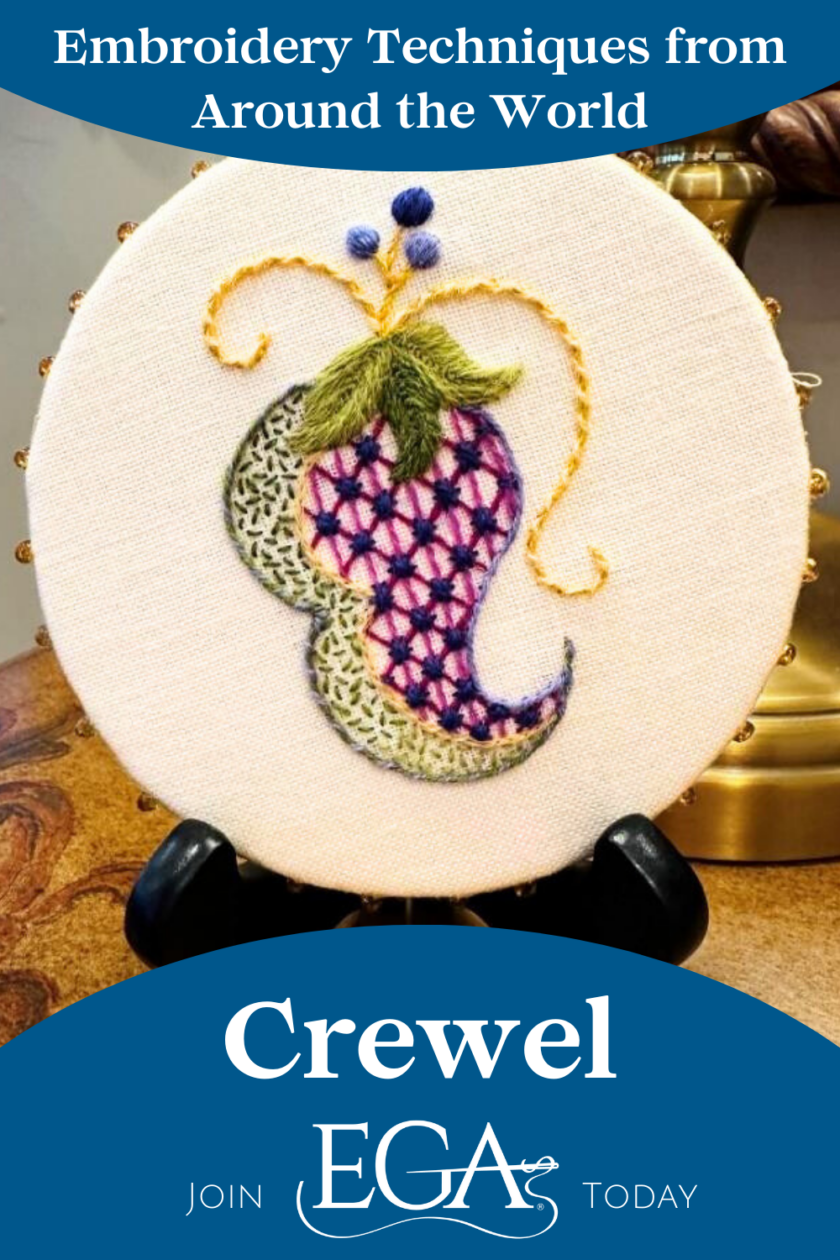
Crewel Embroidery. (2023, October 17). In Wikipedia. https://en.wikipedia.org/wiki/Crewel_embroidery
Jeroy, J. An Introduction to Crewel and Surface Embroidery (2019th ed.). Embroiderers’ Guild of America Education Department.
(n.d.). Brief History of Crewel Embroidery. World of Needlepoint. https://www.worldofneedlepoint.com/brief-history-of-crewel-embroidery/
(n.d.). Crewel Embroidery. Textile Research Centre. https://trc-leiden.nl/trc-needles/regional-traditions/europe-and-north-america/embroideries/crewel-embroidery
(2023, December 23). The History of Crewel Embroidery: A Timeless Craft. Su Embroidery Studio. Retrieved October 16, 2024, from https://www.suembroidery.com/chinese-silk-embroidery-blog/crewel-embroidery-history
(2021, March 11). An Introduction to Crewel Embroidery. Chloe Savage Embroidery. Retrieved October 16, 2024, from https://www.chloesavageembroidery.com/an-introduction-to-crewel-embroidery/
Panamaroff, A. (n.d.). Crewel Embroidery. Edmonton Needlecraft Guild. Retrieved October 16, 2024, from https://www.edmontonneedlecraftguild.org/info/crewel-embroidery
